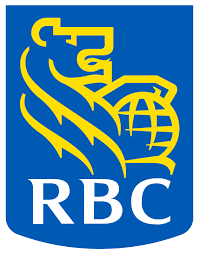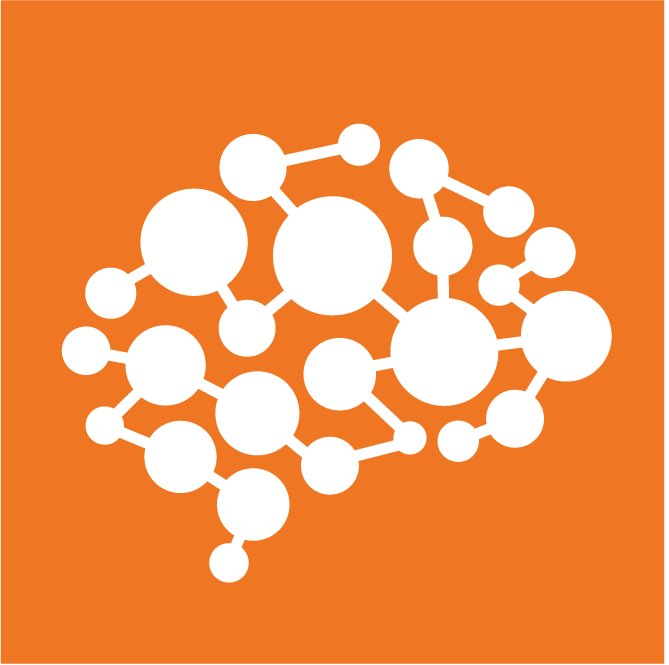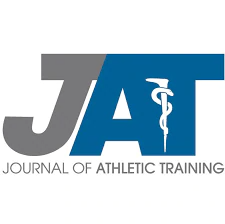1
Whole Food Diet and Supplementation
Optimal nutrition supports neuroplasticity. Adherence to a healthy diet is imperative in optimizing a healthy brain and cognitive performance. This also helps in reducing the risk of cognitive decline over time.
The Mediterranean diet has been studied for years and is considered one of the best dietary models for brain health and longevity. It focuses on primarily plant-based foods, such as fruits and vegetables, whole grains, legumes and nuts, and healthy fats such as olive oil. Research has determined that adhering to a Mediterranean diet can reduce the risk for Alzheimer’s disease (AD) and Mild Cognitive Impairment.


2
Adding Aerobic
Excercise
Exercise promotes neuroplasticity. Aerobic exercise may have positive effects on the brain by increasing BDNF, functional connectivity and activation, increasing cerebral blood volume, and increasing gray and white matter of the prefrontal cortex. This plays a significant role in memory, intelligence, and language. With improvements in cognitive structure from aerobic exercise, come improvements in cognitive function. Want to discover five ways physical activity can positively affect your brain?
3
Maintaining Mental Stimulation
Mental activity improves neuroplasticity. You can’t stop exercising your biceps after age 50 and expect them to stay strong for a lifetime. This stands true for your brain, too. Health experts across all fields now commonly advise adults to engage in mentally stimulating activities on a regular basis to keep the mind young.

4
Expanding Social
Interaction
Being around others stimulates neuroplasticity and a healthy brain. Cognitive decline and memory loss are typical for the aging population, but not inevitable. While many people look straight toward medicine and pharmaceuticals for brain support, some studies suggest that you should actually be looking toward your friends instead.
5
Sleeping 7-8 Hours
a Night
Deep and restful sleep strengthens neuroplasticity and a healthy brain. Recent research has discovered that sleep is the time when the brain removes toxins that accumulate during wakeful hours and can contribute to brain disorders such as Alzheimer’s disease. This is like taking out the brain trash and it occurs because of the “glymphatic” system that uses the brain’s blood vessels to pump cerebral spinal fluid through the brain’s tissues. In effect pumping out the garbage that collects during the day. This process takes a lot of energy. We only seem to have this energy during sleep when we are not actively processing wakeful information. We all know getting that much needed rest can be difficult.

6
Paying Attention to Mental Fitness
Mental fitness maintains neuroplasticity. We seek personal trainers when we want to get physically fit. We seek medical doctors when we have physical illness and we need to seek mental health professionals when we want to improve mental fitness. When needed, treatments have been developed and tested to successfully reduce symptoms for many cognitive health concerns. Recent research suggests that the large majority of people benefit from psychotherapy. Discover Nelson’s story about how Brain Armor helped him on his mental fitness journey.
7
Achieving Regular O3i Monitoring
Optimal omega-3 status boosts neuroplasticity. An omega-3 index (O3i) is a simple blood test that reflects the percentage of omega-3s compared to the total amount of fatty acids present in the cell membranes of red blood cells. Higher O3i has been correlated with larger total normal brain volume and hippocampal volume in aging populations, suggesting reduced risk of the normal brain atrophy that is commonly seen with aging. Moreover, studies have shown that positive changes in brain structure with higher O3i scores lead to improved brain function and are inversely associated with dementia in older adults. See how Brain Armor improved the omega-3 Index of Sports Med Professionals and Pro Athletes in The Living Brain Project.

FEATURED STUDIES:

The Royal Bank of Canada [case study coming soon]
References
Traumatic Brain Injury
- Masel BE and DeWitt DS. Traumatic brain injury: a disease process, not an event. J. Neurotrauma 27, 1529-1540, 2010.
- Dyall SC, Michael-Titus A. Neurological benefits of omega-3 fatty acids. Neuromol Med 10: 219-235, 2008.
- Thau-Zuchman O, Ingram R, Harvey GG, et al. A single injection of docahexaenoic acid induces a pro-resolving lipid mediator profile in the injured tissue and a long-lasting reduction in neurological deficit after traumatic brain injury in mice. J Neurotrauma 37: 66-79, 2020.
- Wilson L, Stewart W, Dams-O’Connor, et al. The chronic and evolving neurological consequences of traumatic brain injury. Lancet Neurol. 16, 813-825, 2017.
- Bazan NG. Cell survival matters: docosahexaenoic acid signaling, neuroprotection and photoreceptors Trend Neurosci. 29, 263-271, 2006.
- Bazan NG, Musto AE. and Knott EJ. Endogenous signaling by omega-3 docosahexaenoic acid-derived mediators sustains homeostatic synaptic and circuitry integrity. Mol. Neurobiol. 44, 216-222, 2011.
- Serhan CK and Petasis NA. Resolvins and protectins in inflammation resolution. Chem. Rev. 111, 5922-5943, 2011.
- Beni-Adani L, Gozes I, Cohen Y, et al. A peptide derived from activity-dependent neuro- protective protein (ADNP) ameliorate injury response in closed head injury in mice. J Pharmacol. Exp. Ther. 296, 57-63, 2001.
- Shahim P, Gren M, Liman V, et al. Serum neurofilament light protein predicts clinical outcome in traumatic brain injury. Sci. Rep. 6, 36791, 2016.
- Shahim P, Zetterberg H, Tegner Y, et al. Serum neurofilament light as a biomarker for mild traumatic brain injury in contact sports. Neurology 88, 1788-1794, 2017.
- Turtzo LC, Lescher J, Janes L, et al. Macrophagic and microglial responses after focal traumatic brain injury in the female rat. J. Neuroinflammation 11, 82, 2014.
- Johnson VE, Stewart W, and Smith DH. Traumatic brain injury and amyloid-beta pathology: a link to Alzheimer’s disease? Nat. rev. Neurosci. 11, 361-370, 2010.
- Kumar A and Loane DJ. Neuroinflammation after traumatic brain injury: opportunities for therapeutic intervention. Brain Behav. lmmun. 26, 1191-1201, 2012.
- Wu A, Ying Z, Gomez-Pinilla F. Omega-3 fatty acids supplementation restores mechanisms that maintain brain homeostasis in traumatic brain injury. J Neurotrauma 24: 1587-1595, 2007.
- Wu A, Ying Z, and Gomez-Pinilla F. The salutary effects of [)HA dietary supplementation on cognition, neuroplasticity, and membrane homeostasis after brain trauma. J. Neurotrauma 28, 21132122, 2011.
- Zhu W. Chi N, Zou P, et al. Effect of docosahexaenoic acid on traumatic brain injury in rats. Exp. Ther. Med. 14, 4411-4416, 2017.
- Harvey LD, Yin Y, Attarwala IY, et al. Administration of DHA reduces endoplasmic reticulum stress-associated inflammation and alters microglial or macrophage activation in traumatic brain injury. ASN Neuro 7:1-15, 2015.
- Yin Y, Li E, Sun G, Yan HQ, et al. Effects of DHA on hippocampal autophagy and lysosome function after traumatic brain injury. Mol. Neurob1ol. 55, 2454-2470, 2018.
- Begum G, Yan HQ, Li L, e al. Docosahexaenoic acid reduces ER stress and abnormal protein accumulation and improves neuronal function following traumatic brain injury. J. Neurosci. 34, 3743-3755, 2014.
- Michael-Titus AT and Priestley JV. Omega-3 fatty acids and traumatic neurological injury: from neuroprotection to neuroplasticity? Trends Neurosci. 37, 30-38, 2014.
- Oliver JM, Jones MT, Kirk KM, et al. Effect of docosahexaenoic acid on a biomarker of head trauma in American football. Med. Sci. Sports Exerc. 48, 974-982, 2016.
- Zheng W, ZhuGe Q, Zhong M, et al. Neurogenesis in adult human brain after traumatic brain injury. J Neurotrauma 30: 1872-1880, 2013.
- Chen X, Pan Z, Fang Z, et al. Omega-3 polyunsaturated fatty acid attenuates traumatic brain injury-induced neuronal apoptosis by inducing autophagy through the upregulation of SIRT2-mediated deacetylation of Beclin-1. J Neuroinflam 15:310-325, 2018.
- Bazan NG: Neuroprotectin D1. A DHA-derived mediator that protects brain and retina against cell injury-induced oxidative stress. Brain Pathol 15:159–166, 2005.
- Bailes JE, Sears B, Asselin B. Therapeutic uses of high-dose omega-3 fatty acids to treat comatose patients with severe brain injury. PharmaNutrition, 1(3):86–89, 2013.
- Högyes E, Nyakas C, Kiliaan A, Farkas T, Penke B, Luiten PG: Neuroprotective effect of developmental docosahexaenoic acid supplement against excitotoxic brain damage in infant rats. Neuroscience 119:999–1012, 2003.
- Lewis M, Bailes JE. Neuroprotection for the warrior: dietary supplementation with omega-3 fatty acids. Military Med 176: 1120-1127, 2011.
- Lewis M, Ghassemi P, Hibbeln J. Therapeutic use of omega-3 fatty acids in severe head trauma. Am J Emerg Med. 31(1): 273.e5-8, 2012.
- Petraglia A, Maroon JC, Bailes JE. From the field of play to the field of combat: a review of medical management of concussion. Neurosurgery 70: 152-1533, 2012.
- Roberts L, Bailes J, Dedhia H, Zikos A, Singh A, McDowell D, Failinger C, Biundo R, Petrick J, Carpenter J. Surviving a mine explosion. J Am Coll Surg. Aug;207(2):276-83. doi: 10.1016/j.jamcollsurg .02.015, 2008.
- Sullivan PG, Rabchevsky AG, Waldmeier PC, Springer JE: Mitochondrial permeability transition in CNS trauma: cause or effect of neuronal cell death? J Neurosci Res 79:231–239, 2005.
- Kim H.Y., Akbar M., Lau A. et al. Inhibition of neuronal apoptosis by docosahexaenoic acid (22:6n-3). Role of phosphatidylserine in antiapoptotic effect. J Biol Chem. 275: 35215-35223, 2000.
- Akbar M., Calderon F., Wen Z. et al. Docosahexaenoic acid: a positive modulator of Akt signaling in neuronal survival. Proc Natl Acad Sci USA.102: 10858-10863, 2005.
- Kawakita E., Hashimoto M., Shido O. Docosahexaenoic acid promotes neurogenesis in vitro and in vivo. Neuroscience. 139: 991-997, 2006.
- Calderon F., Kim H.Y. Docosahexaenoic acid promotes neurite growth in hippocampal neurons. J Neurochem. 90: 979-988, 2004.
- Cao D., Kevala K., Kim J., et al. Docosahexaenoic acid promotes hippocampal neuronal development and synaptic function. J Neurochem. 111: 510-521, 2009.
- Chen X, Wu S, Chen C, et al. Omega-3polyunsaturated fatty acid supplementation attenuates microglial-induced inflammation by inhibiting the HMGB1/TLR4/NF-κB pathway following experimental traumatic brain injury. J Neuroinflammation. 14:143, 2017.
- Inoue T, Tanaka M, Masuda S, et al. Omega-3polyunsaturated fatty acids suppress the inflammatory responses of lipopolysaccharide-stimulated mouse microglia by activating SIRT1pathways. Biochim Biophys Acta. 1862:552–60, 2017.
- Shen L, Yang Y, Ou T, et al. Dietary PUFAs attenuate NLRP3 inflammasome activation via enhancing macrophage autophagy. J Lipid Res.58:1808–21, 2017.
- Harvey LD, Yin Y, Attarwala IY, et al. Administration of DHA reduces endoplasmic reticulum stress-associated inflammation and alters microglial or macrophage activation in traumatic brain injury. Asn Neuro. 7:1759091415618969, 2015.
- Kurtys E, Eisel UL, Verkuyl JM, et al. The combination of vitamins and omega-3 fatty acids has an enhanced anti-inflammatory effect on microglia. Neurochem Int. 99:206–14, 2016.
- Pu H, Guo Y, Zhang W, et al. Omega-3 polyunsaturated fatty acid supplementation improves neurologic recovery and attenuates white matter injury after experimental traumatic brain injury. J Cereb Blood Flow Metab.33:1474–84, 2013.
- Wu, A., Molteni, R., Ying, Z., et al. A saturated-fat diet aggravates the outcome of traumatic brain injury on hippocampal plasticity and cognitive function by reducing brain-derived neurotrophic factor. Neuroscience 119,365–375, 2003.
- Wu, A., Ying, Z., Gomez-Pinilla, F. Dietaryomega-3 fatty acids normalize BDNF levels, reduce oxidative damage, and counteract learning disability after traumatic brain injury in rats. J. Neurotrauma 21,1457–1467, 2004.
- Wu, A., Ying, Z., and Gomez-Pinilla, F. Oxidative stress modulates Sir2alpha in rat hippocampus and cerebral cortex. Eur. J. Neurosci. 23,2573–2580, 2006.
- Bazan, N.G., Musto, A.E, Knott, E.J. Endogenous signaling by omega-3 Docosahexaenoic acid-derived mediators sustains homeostatic synaptic and circuitry integrity. Mol. Neurobiol. 44. 216-222, 2011.
- Mills JD, Sedney CL, Bailes Je, et al. Omega-3 dietary supplementation reduces traumatic axonal injury in a rodent model. J Neurosurg. Jan;114 (1):77-84, 2011.
- Bailes JE, Mills JD, Hadley K. Dietary supplementation with the Omega-3 fatty acid docosahexaenoic acid in traumatic brain injury. Neurosurgery, 68(2):474-481, 2011.
- Bailes JE, Mills JD. Docosahexaenoic acid (DHA) reduces traumatic axonal injury in a rodent head injury model. J Neurotrauma 27(9):1617-24, 2010.
- Thau-Zuchman O, Gomes RN, Dyall SC, et al. Brain phospholipid precursors administered post-injury reduce tissue damage and improve neurological outcome in experimental traumatic brain injury. J Neurotrauma 36:25-42, 2019.
- Hasadsri L, Wang BH, Lee JV, et al. Omega-3 fatty acids as a putative treatment for traumatic brain injury. J Neurotrauma 30:298-906, 2013.
- Niemoller TD, Stark DT and Bazan NG. Omega-3 fatty acid docosahexaenoic acid is the precursor of neuroprotection DI in the nervous system. World Rev Nutr Diet 99, 46-54, 2009.
- Horrocks LA and Farooqui AA. Docosahexaenoic acid in the diet: Its importance in maintenance and restoration of neural membrane function. Prostaglandins Leukot Essent Fatty Acids 70, 361-372, 2004.
Spinal Cord Injury
- King VR, Huang WL, Dyall SC, et al. Omega-3 fatty acids improve recovery, whereas omega-6 fatty acids worsen outcome, after spinal cord injury in the adult rat. J. Neurosci. 26, 4672-4680, 2006.
- Ward RE, Huang W, Curran OE, et al. Docosahexaenoic acid prevents white matter damage after spinal cord injury. J. Neurotrauma 27, 1769-1780 2010.
- Hall JCE, Priestley JV, Perry VH, Michael-Titus AT. Docosahexaenoic acid, but not eicosapenaenoic acid, reduces the early inflammatory response following compression spinal cord injury in the rat. J Neurochem 121: 738-750, 2012.
- Lang-Lazdunski L, Blondeau N, Jarretou G, Lazdunski M, Heurteaux C: Linolenic acid prevents neuronal cell death and paraplegia after transient spinal cord ischemia in rats. J Vasc Surg 38:564–575, 2003.
- Samaddar S. Effect of Docosahexaenoic Acid (DHA) on Spinal Cord Injury. Adv Neurobiol. 12:27-39. doi: 10.1007/978-3-319-28383-8-2, 2016.
- King, V.R., Huang, W.L., Dyall, S.C., et al. Omega-3 fatty acids improve recovery, whereas omega-6 fatty acids worsen outcome, after spinal cord injury in the adult rat. J. Neurosci. 26, 4672-4680.
- Huang, W.L, King, V.R., Curran, O.E., et al. A combination of intravenous and dietary docosahexaenoic acid significantly improves outcome after spinal cord injury. Brain 130, 3004-3019, 2007.
- Liu, Z.H., Yip, P.K., Adams, L., et al. A single bolus of docosahexaenoic acid promotes neuroplastic changes in the innervation of spinal cord interneurons and motor neurons and improves functional recover after spinal cord injury. J. Neurosci. 35, 12733-12752, 2015.
- Pasvogel AE, Miketova P, Moore IM. Differences in CSF phospholipid concentration by traumatic brain injury outcome. Biol Res Nurs 11: 325-331, 2010.
- Carrie I, Clement M, de Javel D, et al. Phospholipid supplementation reverses behavioral and biochemical alterations indeuced by n-3 polyunsaturated fatty acid deficiency in mice. J Lipid Res 41: 473-480, 2000.
Stroke
- Belayev L, Khoutorova L, Atkins KD, et al. Docosahexaenoic acid therapy of experimental ischemic stroke. Transl. Stroke Res. 2, 33-41, 2011.
- Eady TN, Belayev L. Khoutorova L, et al. Docosahexaenoic acid signaling modulates cell survival in experimental ischemic stroke penumbra and initiates long- term repair in young and aged rats. PloS one 7, e46151, 2012.
- Mayurasakorn K, Niatsetskaya ZV, et al. DHA but not EPA emulsions preserve neurological and mitochondrial function after brain hypoxia-ischemia in neonatal mice. PloS One 11. e0160870, 2016.
- Williams JJ, Mayurasakorn K, Vannucci SJ, et al. N-3 fatty acid rich triglyceride emulsions are neuroprotective after cerebral hypoxic-ischemic injury in neonatal mice. PloS One 8, e56233, 2016.
- Mayurasakorn K, Niatsetskaya ZV, Sosunov SA, et al. DHA but not EPA emulsions preserve neurological and mitochondrial function after brain hyoxia-ischemia in neonatal mice. PloS One 11: e0160870, 2016.
- Chang CY, Kuan YH, Li JR, et al. Docosahexaenoic acid reduces cellular inflammatory response following permanent focal cerebral ischemia in rats. J NutrBiochem. 24:2127–37, 2013.
- Gwon DH, Hwang TW, Ro et al. High endogenous accumulation of omega-3 polyunsaturated fatty acids protect against ischemia-reperfusion renal injury through AMPK-mediated autophagy in Fat-1 mice. Int J Mol Sci. 18:2081, 2017.
- Belayev L, Khoutorova L, Atkins KD, et al. Robust docosahexaenoic acid-mediated neuroprotection in a rat model of transient focal cerebral ischemia. Stroke 40:3121-3126, 2009.
- Mayurasakorn K, Williams JJ, et al. Docosahexaenoic acid: brain accretion and roles in neuroprotection after brain hypoxia and ischemia. Curr Opin Clin Nutr Metab Care 14:158-167.
- Johansson I, Monsen VT, et al. The marine n-3 PUFA DHA evokes cytoprotection against oxidative stress and protein misfolding by inducing autoplay and NFE2L2 in human retinal pigment epithelial cells. Autopjagy 11:1636-1651, 2015.
Biochemical and Metabolic
- Gerbi A, Maixent JM, Ansaldi JL, et al. Fish oil supplementation prevents diabetes-induced nerve conduction velocity and neuroanatomical changes in rats. J Nutr. Jan;129(1):207-13, 1999.
- Li MY, Wang YY, Cao R, et al. Dietary fish oil inhibits mechanical allodynia and thermal hyperalgesia in diabetic rats by blocking nuclear factor-kappaB-mediated inflammatory pathways. J Nutr Biochem. Nov;26(11):1147-55, 2015.
- Tatsumi Y, Kato A, Sango K, et al. Omega-3 polyunsaturated fatty acids exert anti-oxidant effects through the nuclear factor (erythroid-derived 2)-related factor 2 pathway in immortalized mouse Schwann cells. J Diabetes Investig. May;10(3):602-12, 2019.
- Groves NJ, McGrath JJ, Burne TH. Vitamin D as a neurosteroid affecting the developing and adult brain. Annu Rev Nutr. 34:117-41, 2014.
- 5 Harms LR, Burne TH, Eyles DW, et al. Vitamin D and the brain. Best Pract Res Clin Endocrinol 5. Metab. Aug;25(4):657-69, 2011.
- Calder PC. Omega-3 fatty acids and inflammatory processes: from molecules to man. Biochem Soc Trans. Oct 15;45(5):1105-1115. doi: 10.1042/BST20160474, 2017.
- Calderon F, Kim HY: Docosahexaenoic acid promotes neurite growth in hippocampal neurons. J Neurochem 90:979–988, 2004.
- Bazinet, RP and Laye, S. Polysaturated fatty acids and their metabolites in brain function and disease. Nat. Rev. Neurosci.15, 771-785, 2014.
- Danthi SJ, Enyeart JA, Enyeart JJ: Modulation of native T-type calcium channels by omega-3 fatty acids. Biochem Biophys Res Commun 327:485–493, 2005.
- Dewan MC, Rattani A, Gupta S, Baticulon RE, Hung YC, Punchak M, Agrawal A, Adeleye AO, Shrime MG, Rubiano AM, Rosenfeld JV, Park KB. Estimating the global incidence of traumatic brain injury. J Neurosurg. Apr 1:1-18. doi: 10.3171/2017.10.JNS17352. [Epub ahead of print] PubMed PMID: 29701556, 2018.
- Echeverría F, Valenzuela R, Catalina Hernandez-Rodas M, Valenzuela A. Docosahexaenoic acid (DHA), a fundamental fatty acid for the brain: New dietary sources. Prostaglandins Leukot Essent Fatty Acids. 2017 Sep;124:1-10. doi: 10.1016/j.plefa.2017.08.001.
- Humphreys I, Wood RL, Phillips CJ, Macey S. The costs of traumatic brain injury: a literature review. Clinicoecon Outcomes Res. Jun 26; 5:281-7. doi: 10.2147/CEOR.S44625. Print 2013. PubMed PMID: 23836998; PubMed Central PMCID: PMC3699059, 2013.
- Williams JJ, Mayurasakorn K, Vannucci SJ, et al. N-3 fatty acid rich triglyceride emulsons are neuroprotective after cerebral hypoxic-ischemic injury in neonatal mice. PloS One 8, e56233, 2013.
- Jump DB: Dietary polyunsaturated fatty acids and regulation of gene transcription. Curr Opin Lipidol 13:155–164, 2002.
- Lauritzen I, Blondeau N, Heurteaux C, Widmann C, Romey G, Lazdunski M: Polyunsaturated fatty acids are potent neuroprotectors. EMBO J 19:1784–1793, 2000.
- Lauritzen L, Brambilla P, Mazzocchi A, Harsløf LB, Ciappolino V, Agostoni C. DHA Effects in Brain Development and Function. Nutrients. Jan 4;8(1). pii: E6. doi: 10.3390/nu8010006, 2016.
- Lonergan PE, Martin DS, Horrobin DF, Lynch MA: Neuroprotective actions of eicosapentaenoic acid on lipopolysaccharide-induced dysfunction in rat hippocampus. J Neurochem 91:20–29, 2004.
- Ma VY, Chan L, Carruthers KJ. Incidence, prevalence, costs, and impact on disability of common conditions requiring rehabilitation in the United States: stroke, spinal cord injury, traumatic brain injury, multiple sclerosis, osteoarthritis, rheumatoid arthritis, limb loss, and back pain. Arch Phys Med Rehabil. May;95(5):986-995.e1. doi: 10.1016/j.apmr.2013.10.032. Epub 2014 Jan 21. Review. PubMed PMID: 24462839; PubMed Central PMCID: PMC4180670, 2014.
- Ouellet M, Emond V, Chen CT, Julien C, Bourasset F, Oddo S, LaFerla F, Bazinet RP, Calon F. Diffusion of docosahexaenoic and eicosapentaenoic acids through the blood-brain barrier: an in situ cerebral perfusion study. Neurochem Int 55(7):476–82, 2009.
- Sarsilmaz M, Songur A, Kus I, Ozyurt B, Gulec M, Sogut S: The regulatory role of dietary omega-3 essential fatty acids on oxidant/antioxidant balance in the rat hippocampus. Neurosci Res Commun 33:114–123, 2003.
- Songur A, Sarsilmaz M, Sogut S, Ozyurt B, Ozyurt H, Zararsiz I: Hypothalamic superoxide dismutase, xanthine oxidase, nitric oxide, and malondialdehyde in rats fed with fish omega-3 fatty acids. Prog Neuropsychopharmacol Biol Psychiatry 28:693–698, 2004.
- Akbar M., Kim H.Y. Protective effects of docosahexaenoic acid in staurosporine-induced apoptosis: involvement of phosphatidylinositol-3 kinase pathway. J Neurochem. 82: 655-665, 2002.
- Sun GY, Simonyi A, Fritsche KL, Chuang DY, Hannink M, Gu Z, Greenlief CM, Yao JK, Lee JC, Beversdorf DQ. Docosahexaenoic acid (DHA): An essential nutrient and a nutraceutical for brain health and diseases. Prostaglandins Leukot Essent Fatty Acids. Sep;136:3-13. doi: 10.1016/j.plefa.2017.03.006, 2018.
- Wang X, Zhao X, Mao ZY, Wang XM, Liu ZL: Neuroprotective effect of docosahexaenoic acid on glutamate-induced cytotoxicity in rat hippocampal cultures. Neuroreport 14:2457– 2461, 2003.
- Salem, N.M., Lin, Y.H., Moriguchi, T, et al. Distribution of omega-6 and omega-3 polyunsaturated fatty acids in the whole rat body and 25 compartments. Prostaglandins Leukot. Essent. Fatty Acids 100, 13-20, 2015.
- Jouvene, C., Fourmaux, B., Geloen, A, et al. Ultra performance liquid chromatography-mass spectrometry analysis of free and esterified oxygenated derivatives from docosahexaenoic acid in rat brain. Lipids 53, 103-116, 2018.
- Chen CT, Kitson AP et al. Plasma non-esterified docosahexaenoic acid is the major pool supplying the brain. Sci. Rep, 5, 15791, 2015.



